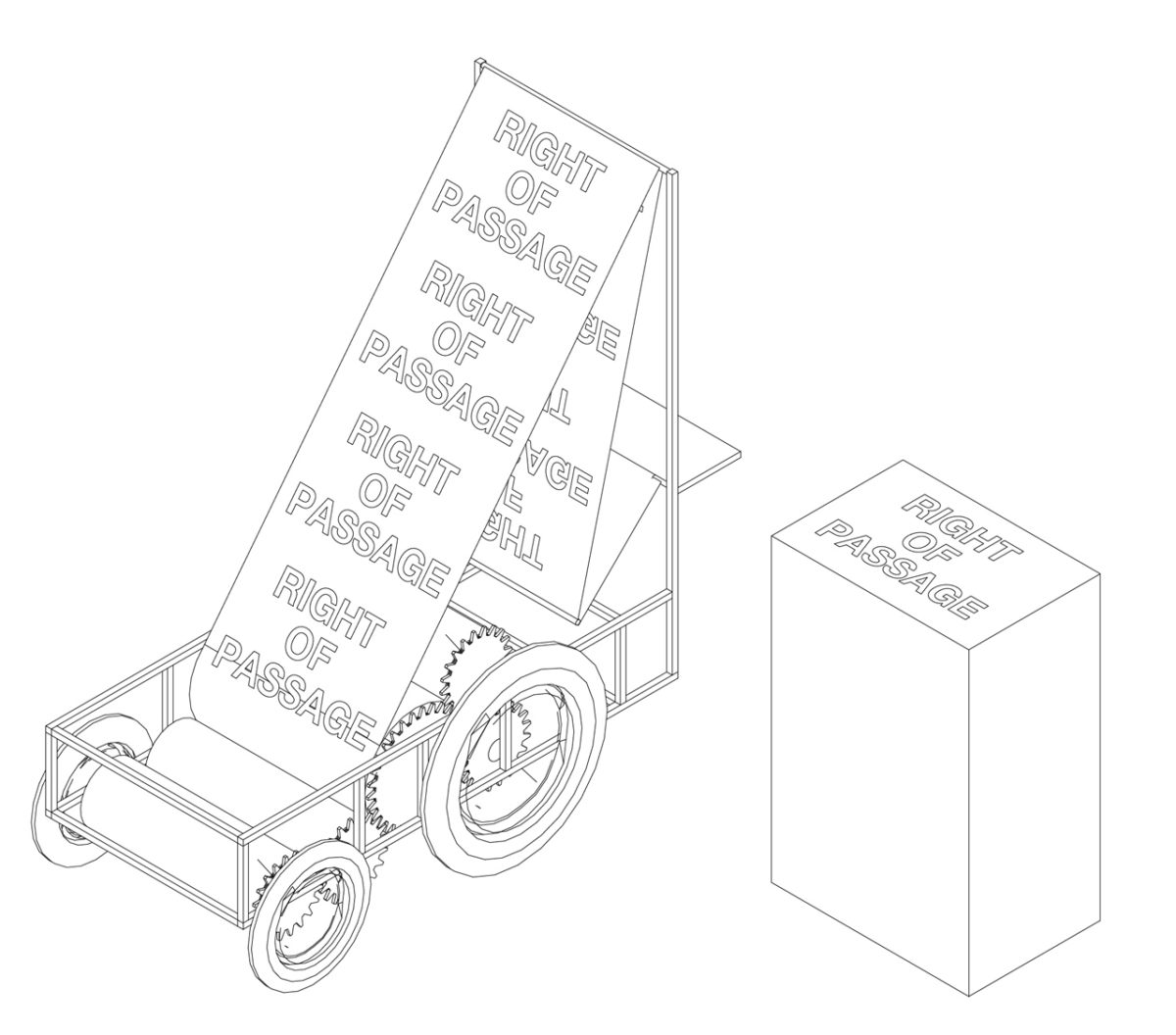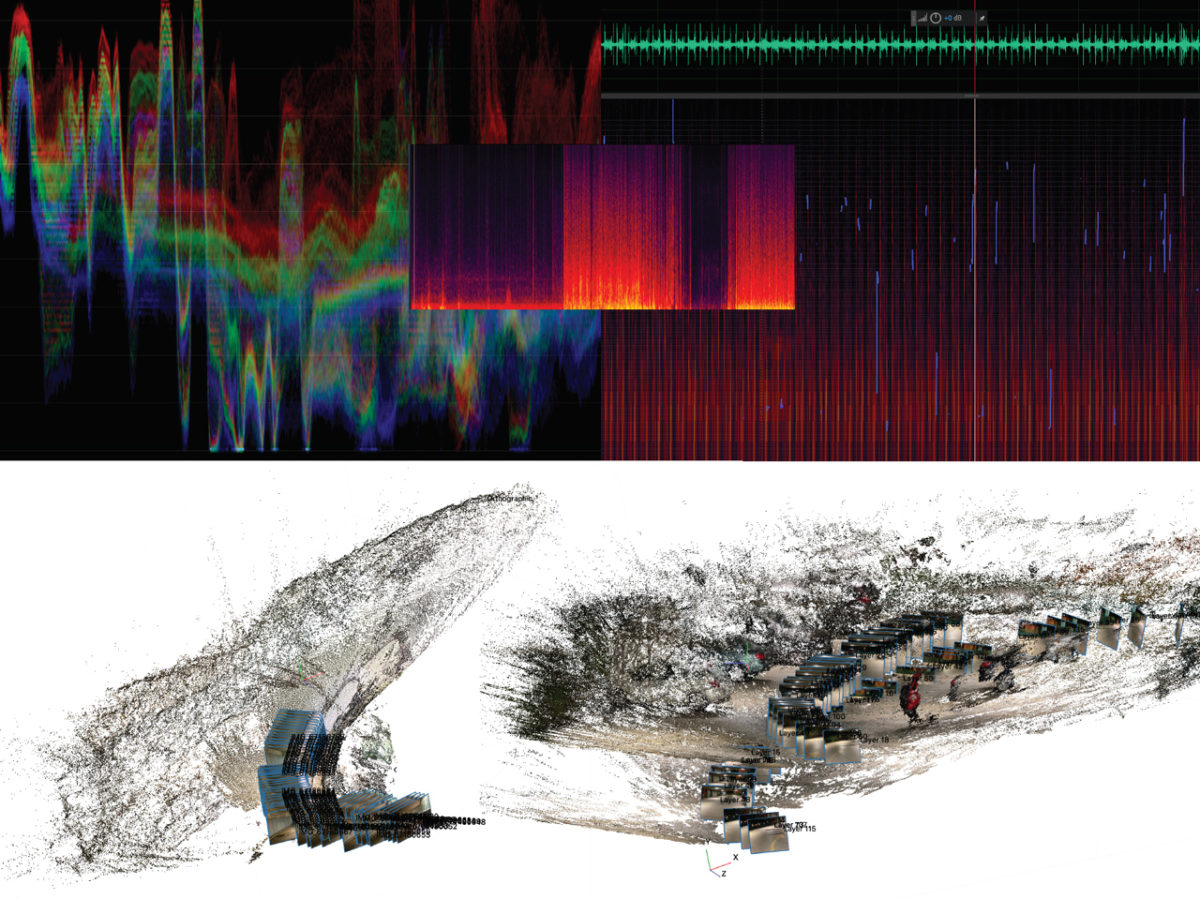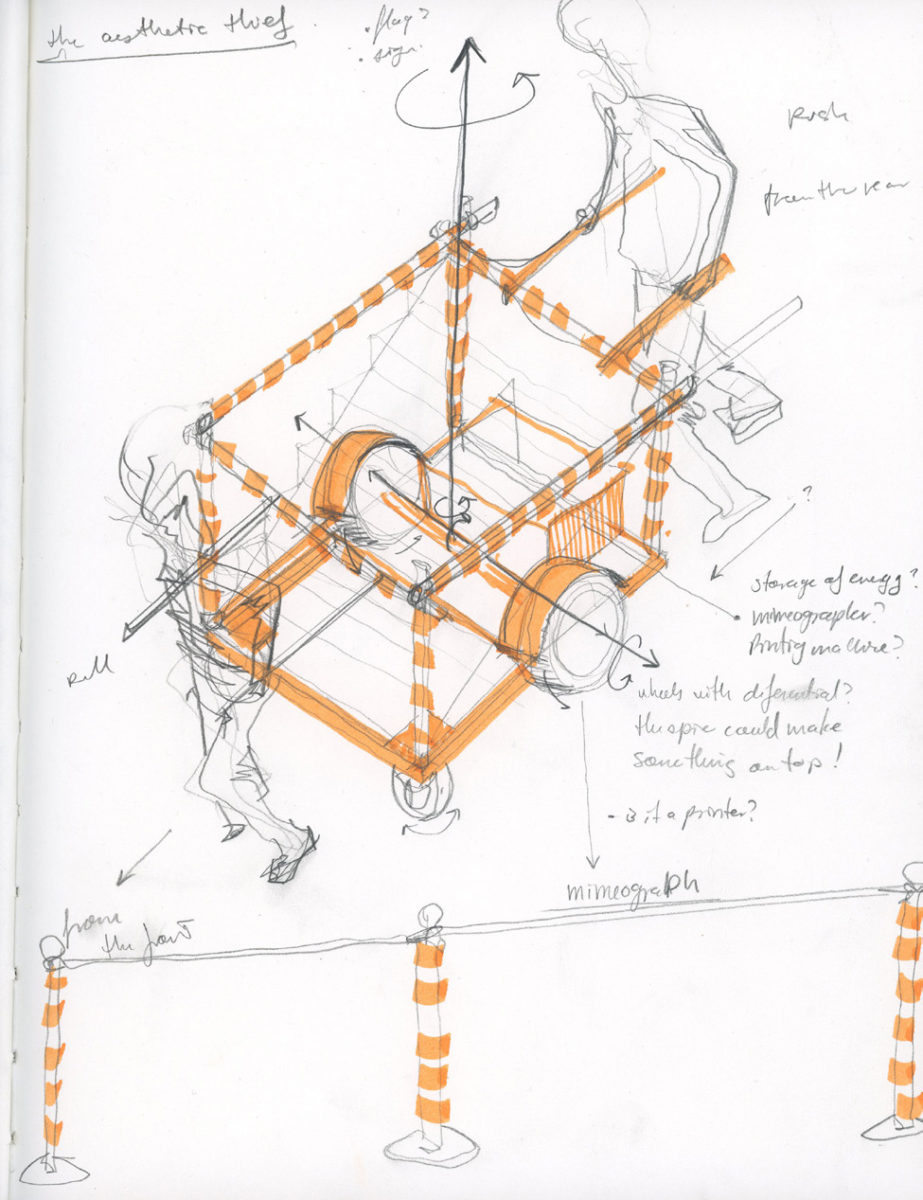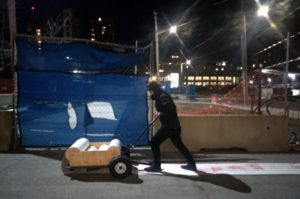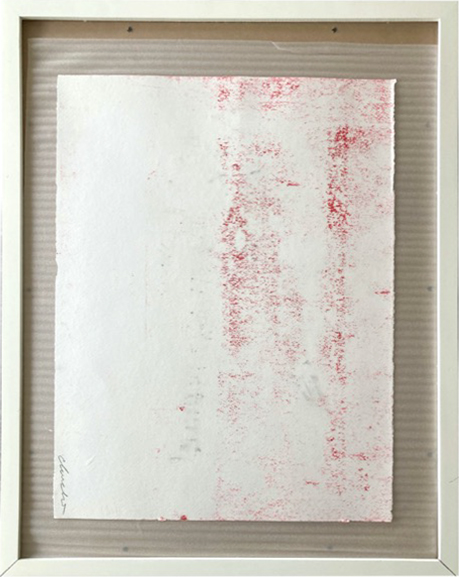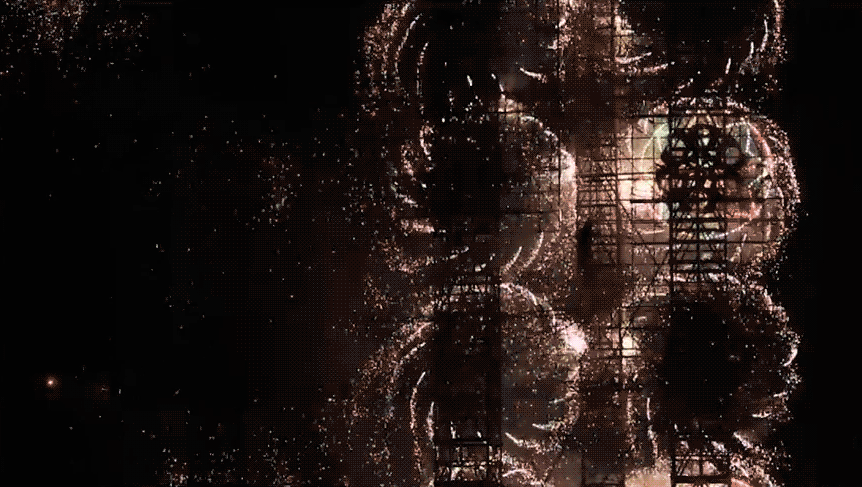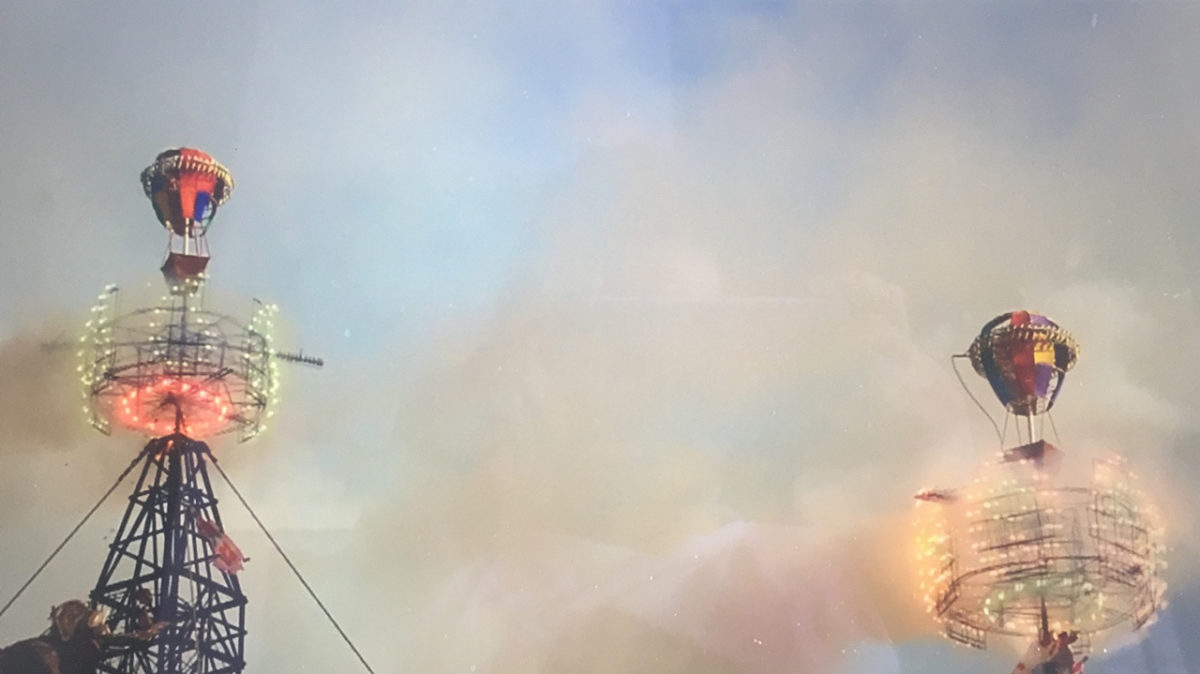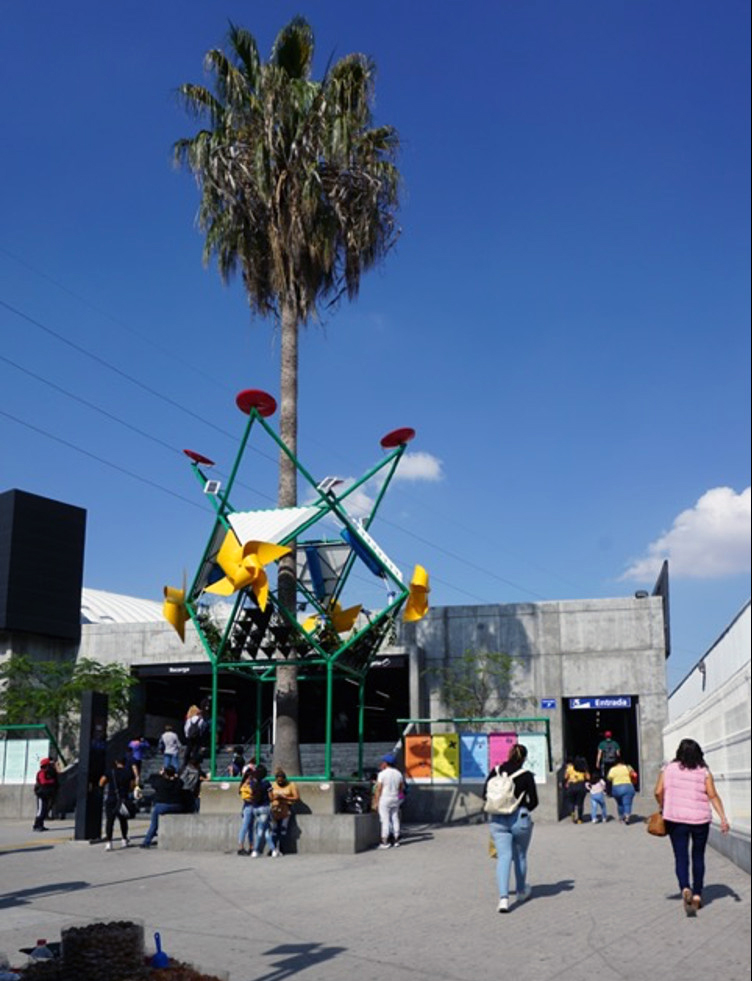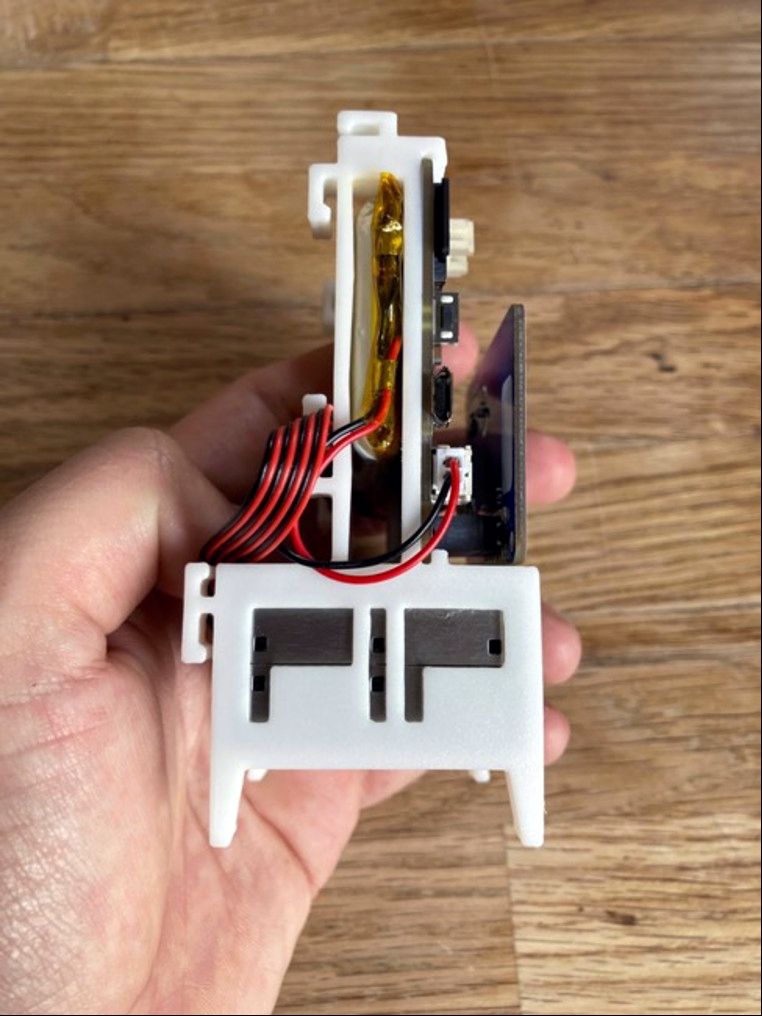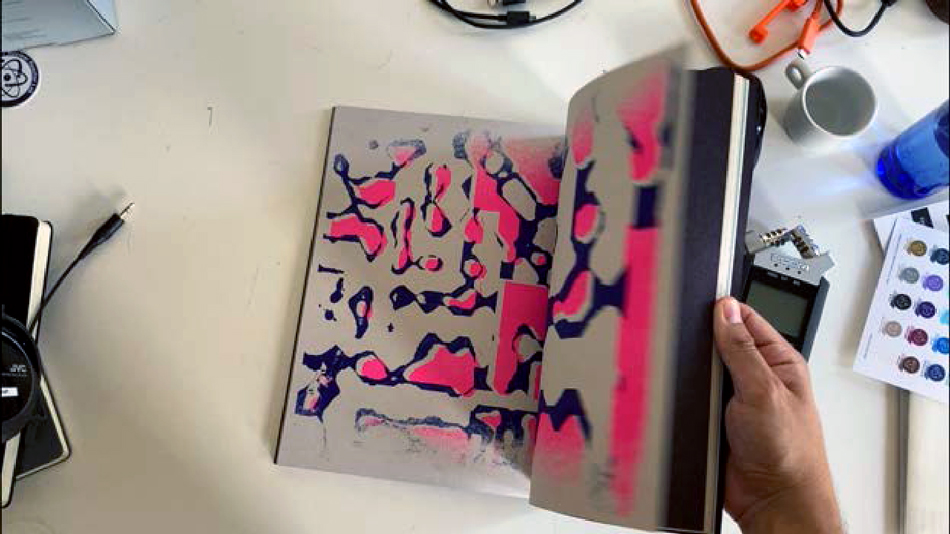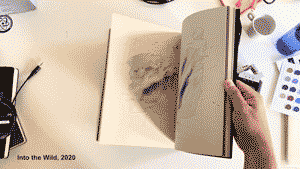← 2021 Schnitzer Prize in the Visual Arts
Chucho Ocampo
Second Place, 2021 Harold and Arlene Schnitzer Prize in the Visual Arts
More about the artist
Interfaces of Touch
Performance and installation of sculptures consisting of wood, rubber, steel dolly, pvc, and paper. Edition of prints on paper using dirt, oil, and graphite. Ongoing from 2019.
The Interfaces of Touch is a series of projects that explore two main research strands. First, the difficulty of effectively representing and communicating natural phenomena and climate change emergencies and their scales. Second, how cities are designed using inherently neoliberal, scientific, deterministic, controlling, and profit-driven urban planning tools that refuse to admit that contingency cannot be computed. In this work, Ocampo seeks to discover whether there is a severing of these ideas on a conceptual level, and if so, how they can be countered, bridged, elaborated, and speculated?
This series of Interfaces are meant to include workshops that, through walking and appropriating spaces, help misuse, misinterpret, and detour deterministic conceptions of control mechanisms and regimes of governmentality.
The Interfaces are trans-cultural and transversal objects; instruments for touching and relating to tell stories and concoct apparitions. The work formulates a methodology to reimagine new ways of experiencing the city and our relationship to more-than-human entities. Using drifting/erring as a tool to try to understand found structures – the physical, architectonical, visual, and sonic – Ocampo seeks to disrupt linear narratives of the built environment, challenge preconceptions around scale, use-function, migration, bureaucracy, citizenship, and movement.
Started in 2019, Interfaces of Touch is an ongoing project that grows as the research guides new ways of dealing with our environment and new sensing technologies, fabrication methods, and/or performative methodologies from contemporary art are incorporated.
Expect People to be Exhausted
Ongoing Artistic Research Project consisting of short film, archive, and set of sculptures and drawings, 2020.
Expect People to be Exhausted is an attempt to understand if there is a way to trace a line between migratory human and more-than-human routes by examining architectural infrastructure, religious beliefs, war tactics, seven and fourteen segment displays, indigenous thought, fire, alchemy, magic, and gunpowder.
After the sanguinary conquest of Tenochtitlán in the XVI century, explorer and conqueror Hernán Cortés had depleted his provisions of gunpowder. Upon surveying the surrounding landscape of the Mexica Valley, he discovered that sulfuric acid could be extracted from an active and venerated volcano, the Popocatepetl, and potassium nitrate collected from the salpetre present in the four great lakes that surrounded Tenochtitlán. Mixing these elements with coal found in the mythical Mexica landscape, Cortés was able to conquer the rest of Mesoamerica.
Five hundred years later in the same valley, Tultepec’s pyrotechnicians continue to gather these resources to erect castillos, thirty-five-meter-tall firework ephemeral structures that act as communication displays displayed during annual festivals. Gathering local, domestic, and international visitors, the tradition has inspired a hybrid system of beliefs that mixes religion, cultural practices, materiality, and magic. Pyrotechnician families keep the recipes as secrets, an inheritance for the members to come, enabling them to transform the landscape with the magic of light and sound; a non-written secret for creating stars, planets, the roar of a volcano, or the loudest scream for an instant.
In Expect People to be Exhausted, Ocampo considers the human bodies traveling north searching for better opportunities and the non-human bodies traveling south searching for a better climate, both moving back and forth through continental migratory routes that overlap in physical space, demonstrating that the migratory condition is constant.
An artistic research exercise that superimposes information between systems that have no apparent or physical manifestation of interdependence, but are capable of connecting despite borders, the research revolves around the movement of human and more-than-human bodies and their relationship with ephemeral structures and displays of communication as well as how ideas and technologies travel and relate to them.
PIP Ciudad Futuro (Future City)
Project by dérive LAB, supported by the Mexico 2020 Action Fund, ICLEI (Local Governments for Sustainability), and Google.org. Developed by Francisco Paillie and Ximena Ocampo.
Prototipos de Infraestructura Publica para una Ciudad del Futuro (Prototypes of Public Infrastructure for a City of the Future, or PIP Ciudad Futuro) seeks to assume public buildings as opportunities to mitigate climate change in cities, generating open data through environmental monitoring sensors. The project asks how to relate effectively to environmental data, or how contemporary arts methodologies can be used to make the invisible (data) visible (artistic practice)? The project’s goal is to create a platform for raising environmental awareness as well as generating a more accessible way of relating to technology.
PIP Ciudad Futuro is a strategy that involves workshops, manuals, and the implementation of monitoring teams in certain areas of the city in order to obtain environmental data which enables the government, citizens, and other stakeholders to make clear decisions and specific actions to mitigate climate change. An initiative that allows for reflection on the impacts of city development, the project helps generate public policies and strengthens a network of local actors ready to adapt cities to a low-carbon future.
As a creative consultant of the project, Ocampo contributed on the understanding of the sensing technologies and strategies in public space, and on the conceptual framework that this proposed infrastructure could have. Collaborators include FabLab Barcelona, Multitud Foundation, researchers from the MIT Media Lab’s City Science Group, MIT Department of Architecture’s Urbanism students, and from the MIT Program in Art, Culture and Technology, current student Chi Po Hao and alumni Giacomo Castagnola and Rae Yuping Hsu.
The project remains under development in the city of Guadalajara. The outcomes of the project have already resulted in an expansion to include the city of Taipei with the support of the Taiwan Ministry of Culture and its cultural exchange program with Latin American artists.
Ppppress
Student run, independent publication founded in 2020 by Aarti Sunder, Po-Hao Chi, Emma Zhu, Faruk Sabanovik, and Chucho Ocampo.
Ppppress was born after a series of conversations between students in the MIT Art, Culture and Technology Program (ACT.) The impact of COVID-19 ignited ideas for how to replace lost space and questions about the changes in format encountered as months passed. A small cohort that shares and learns a lot from each other, the group collaborates frequently on projects. They question both their roles as individual artists inside of MIT and more importantly what they can achieve together as a collective.
Supported by a Council of the Arts at MIT Grant, a RISO printer was leased by ACT in combination with the MIT Architecture School. Using work space in vacant areas of the MIT Media Lab and ACT Venus Lab, additional equipment such as etching benches, press bench, and solar plates have been acquired.
Ppppress engages the broader MIT community by producing new publications and art books related to the CAVS archive as well as the resources of the Art, Film, and Visual Studies Department at Harvard. Part of the founding group participated in the course Critical Media Practice Projects at Harvard.
Beyond the importance that art books, printing, and publishing have in the arts, Ocampo believes this type of collaborative project brings a different dimension to the lonely process of art making and pedagogy. The true capacities that a collaborative artistic project can bring and spread are expanded when thinking extends beyond the individual maker or artist.
About the Artist
| Chucho (Jesús) Ocampo Aguilar is a Mexican artist and architect working in the intersection of art, architecture, and technology. At the heart of his practice lies the concern of how, through interfaces, workshops, walking, and appropriation of spaces can we misuse, misinterpret, and detour deterministic conceptions of our milieu. Using drifting/erring as a tool, Chucho seeks to challenge preconceptions around scale, use-function, migration, bureaucracy, citizenship, and our relation to the more than human entities. He is currently a second year SMACT candidate of the ACT program at MIT, where he cofounded PPPPRESS, a student run independent press. In parallel, Ocampo works as Creative Director and partner in dérive LAB: an art, architecture, and urbanism firm with projects related to housing, urban design, public space interventions, and cultural management, and is cofounder of BEMA: a cultural center in Queretaro, Mexico. |


